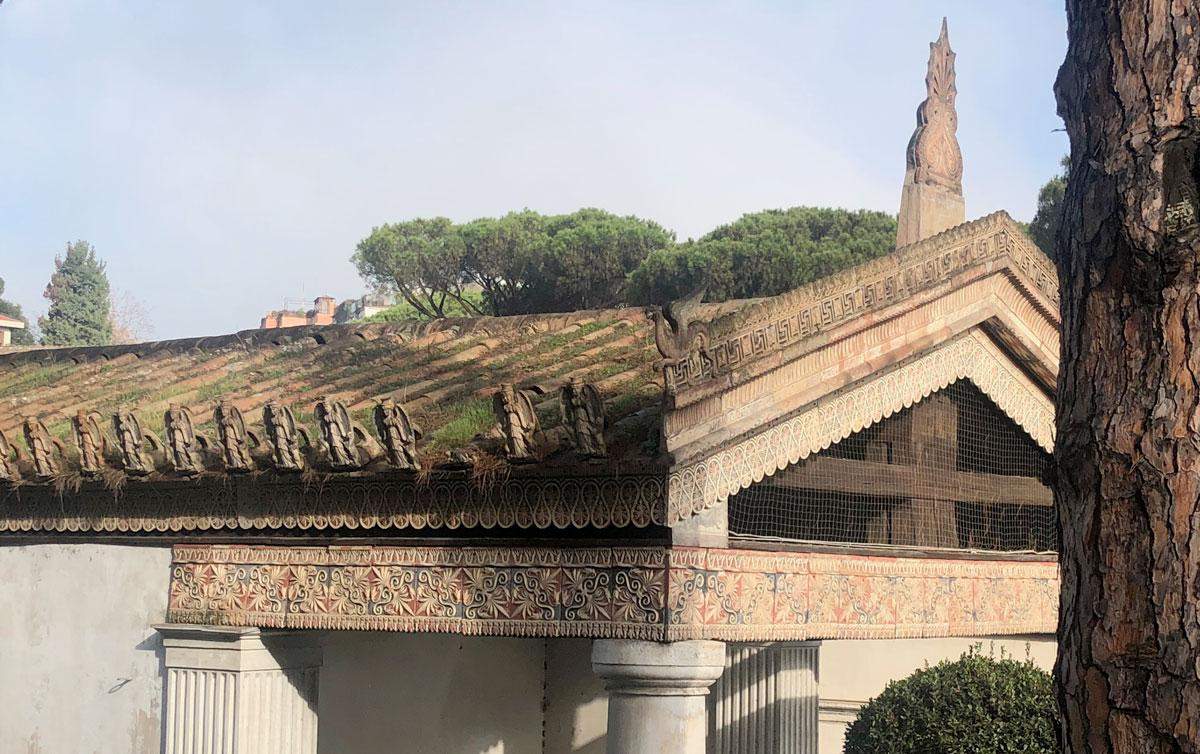Rome, restoration for Alatri Temple, the futuristic reconstruction of the Etruscan-Italic temple
After decades of decay and neglect, the reconstruction of the Temple of Alatri located in the gardens of the National Etruscan Museum of Villa Giulia in Rome, between the Nymphaeum and the right wing of the exhibition route, will finally be returned to the public. It is a life-size reproduction of an Etruscan-Italic temple found in Alatri (Frosinone) in 1882. The reconstruction was overseen by architect and archaeologist Adolfo Cozza at the behest of Felice Barnabei, founding father of the Etruscan Museum, and was based on the results of an excavation conducted by Cozza himself and Hermann Winnefeld of the German Archaeological Institute at La Stazza (1 km north of Alatri).
The two archaeologists’ investigations had uncovered the foundations of a small temple dating from the 3rd-2nd centuries B.C., as well as the remains of its architectural decoration, which served as a model for the faithful reconstruction of modern decorative elements, reproduced with the same techniques and materials used more than two thousand years earlier. The temple, built between 1889 (the year the museum opened) and 1891, constitutes one of the world’s earliest examples of reconstruction for educational and popular purposes. It is an innovative and futuristic work, one of the first cases of open air museum at the international level, so far unjustly underestimated by museological critics, who have focused their attention on some famous contemporary experiences in northern Europe and North America, almost ignoring Cozza and Barnabei’s undertaking, also because of its early transformation into a simple storage facility, inaccessible to the public.
The National Etruscan Museum has now decided, after years of neglect and misrepresentation of its original functions that led to a gradual wear and tear of the architectural decorations, to intervene on the Alatri temple with a functional restoration to return it to public use. In addition, the museum makes it known that this important restoration is only the first step of a wider path, already financed by the Lazio Region through a call for technological innovation. Forty-five years after the last restoration coordinated by Lucos Cozza (Adolfo’s nephew archaeologist), the new construction site is in fact the prerequisite for the future transformation of the temple into a “Temple Machine,” which will house inside it a digital immersive space, in which to experience the telling of history as in a journey through time by playing not only on the technological component, but also on that of historical narration.
 |
| Rome, restoration for Alatri Temple, the futuristic reconstruction of the Etruscan-Italic temple |
Warning: the translation into English of the original Italian article was created using automatic tools. We undertake to review all articles, but we do not guarantee the total absence of inaccuracies in the translation due to the program. You can find the original by clicking on the ITA button. If you find any mistake,please contact us.



























